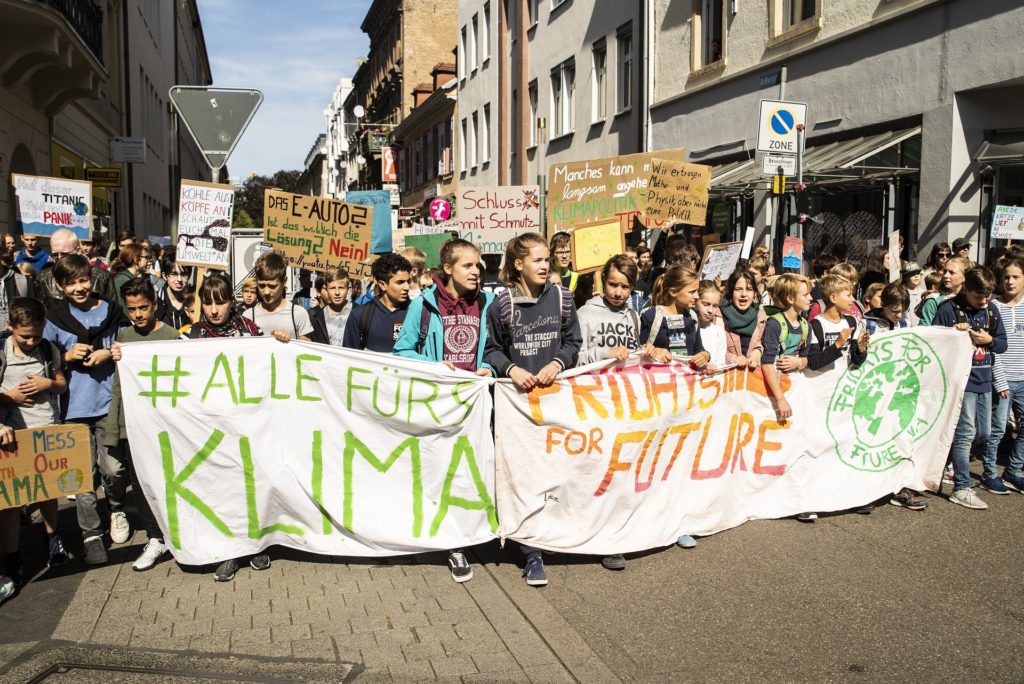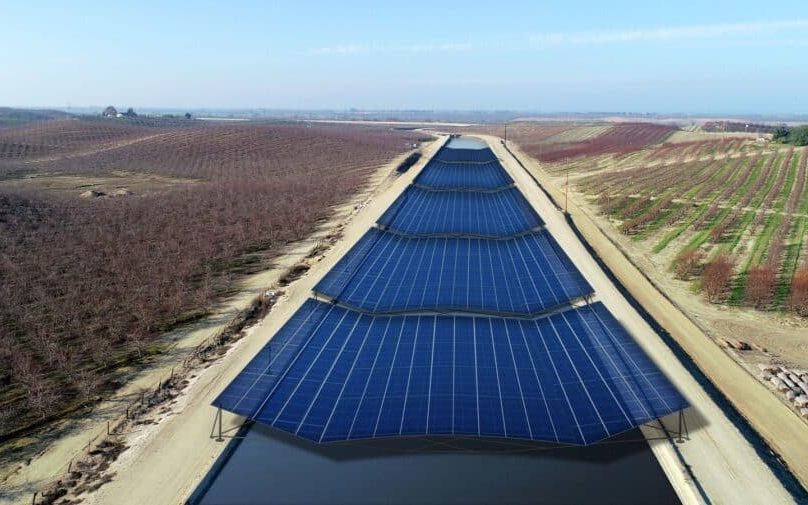
As we take a moment to bow our heads in disappointment or hold our jaws agape at the failures of COP* [*insert any number up to and including 28 here], it’s particularly important we also reflect on some news to keep us bouyed. So here’s 7 good news climate and environmental stories from 2023. For our mental health, to stave off climate doom and climate anxiety, it’s important to end the year on a high note!
Number 7 – Orbiting Solar Power Station?!
In a world first, a solar power has been captured in space and beamed down to Earth! The power was transferred wirelessly, in much the same way as a phone signal originates from a satellite in space. MAPLE (Microwave Array for Power-transfer Low-orbit Experiment) is the name of the system, and was executed by a team at Caltech (California Institue of Technology). The structure which was sent into orbit is lightweight, flexible and has now been proven to withstand the rigors of space travel. This system could genuinely democratize energy availability: removing the need for infrastructure on the ground means energy can be directed to remote regions or ares hit by natural disasters.
Number 6 – EV Battery Recyclability
The problem with EV battery tech has been well documented. While there are rapid moves to improve the efficiency of these batteries, the use of certain raw materials and the end of life management has remained a concern. But Swedish researchers from Chalmers University of Technology may have a solution. They have removed the need for expensive (and harmful) chemicals to separate the aluminum, lithium and other materials such as manganese, cobalt and nickel. Through using organic, plant based oxalic acid, they’ve been able to recover 100% of the aluminum and 98% of the lithium. Eliminating the need to continue the damaging and sometimes heartbreaking mining activities is a great relief. Not using chemicals which also cause risk is even better.
Number 5 – Greta’s Great Impact
After 5 years of Fridays For Future, school students not attending school on Fridays to protest the speed of climate action, there has been confirmed societal impact in Switzerland. It all began with then-15 year old, Greta Thunberg. Through her ritual Friday protest at the Swedish Parliament she started a global movement. And a recent study of Swiss citizens has found that almost one third of the population have a positive attitude towards Greta and the Fridays for Futures protests. Most importantly they have thus made changes to their behavior to reflect their new found environmental concern and respect. Nearly one third of an entire country’s population have started to make changes, in attitudes and actions, from one teenager’s actions. No-one can tell us that one person can’t make a difference!

Number 4 – Invasive cactus turned to biogas
A group of Maasai women in Kenya are taking a many pronged approach to solving a thorny problem. The Opuntia stricta cactus is an invasive species which causes a great deal of harm. It is a very thirsty plant, taking much meeded water from other uses, like drinking and cooking. It produces a sweet fruit, which makes it tempting for livestock and wild animals – but the firm, sharp spikes can cause the animals to become blind or injure their lips badly. For young elephants, the hair on the fruit can case digestive tract issues. The seeds are spread by animals as they travel to vast land, making agriculture increasingly difficult. So a group of women have started harvesting the plant, using very part of it. The pads are ground down and put through a biodigester, create biogas for cooking. The fruits are used for three innovative purposes. The seeds are pressed to produce oil for cosmetic products like body lotion. The pulp is used to make jams and juices. And the skin is dried and ground to create a powder and can then be used to create colouring in foods or make up. The result is all positive! Less trees are being cut for fire wood; fewer animals which must be put down; less burden on the water supply in streams and gullies; financially independant women who can then support their children, especially daughters, to have a better education (meaning less child marriages and female genital mutilation); and empowered women who are respected and included in decision making by the male members of the community. This story made our hearts smile!
Number 3 – Austria fighting planned obsolesence
The production of electronics and electrical appliances is only going to increase. So too will the growing mountain of e-waste. In an attempt to curb this, Austria have launched a program to encourage repair rather than replacement. And in only one year, they’ve distributed 560,000 vouchers for up to €200 each, for people to have their failing appliances or electronics repaired. More than 3,500 locations across the country will take the voucher as 50% payment for the repair, with the Government paying the other half. It’s funded by the Next Generation EU pandemic recovery fund (worth €130 million). Even the cost to have a repair quote can be cut in half with these vouchers. There’s no limit on the number of vouchers per person, just one per piece of faulty equipment. This forms part of the Right to Repair legislation, which means that manufacturers are obligated to provide spare parts for their products, in addition to the information required to carry out repairs. And this is on top of being responsibe for doing the repair – at the customer’s expense – for 5 to10 years after the purchase date. Love to see this innovative thinking!
Number 2 – Arizona canals to get a ‘roof‘
The state of Arizona is no stranger to drought. So in a bid to tackle this from a broad climate action stance as well as local water preservation stance, the Gila River Indian Community and the US Army Corps of Engineers are collaborating on a project to build solar panels over the top of their canals. Of course the major benefit is the production of renewable solar power. Which in this case isn’t in competition with agricultural land. But in addition, the canals will suffer less evaporation. Another positive side effect is that the water will keep the panels cooler, enabling them to achieve higher efficiency. The project isn’t the first to be greenlighted in the US, but it is the first to break ground. India adopted this technique in Gujurat in 2012, so Arizona is keen to learn from them.

Number 1 – The Butterfly Effect
A senior biologist working at the California Acedemy of Sciences has saved a butterfly species which has been struggling. When he was creating a pollinator habitat in his backyard he noticed one butterfly he had rarely seen. He investigated and discovered that the California Pipevine swallowtail butterfly, a California native, needed the sparse Pipevine plant. In short supply, he found them located at the San Francisco Botanical Garden. He was permitted a few clippings and successfully grew them. He built a screen enclosure around them. He then sourced 20 of the Pipevine swallowtail caterpillars, placing them in the protected environment. Another story which shows that one person really can make a difference!
Here’s a bonus one – Coffee without the bean!
A Seatlle start up is ensuring that our favorite hot beverage can atill be served, sustainably. Coffee is, sadly, not the most environmentally responsible drink. The beans grow in very specific areas of the world. Not only are there environmental concerns, such as deforestation, to keep us in our habit, but there are serious social concerns. Not to mention that the climate crisis is going to make growing the beans ever more difficult anyway. So Atomo have a solution – using other ingredients to create the caffeinated liquid. As another bonus, they’re using predominantly upcycled ingredients! The list includes date seeds, sunflower seed extract, pea protein, guava, lemon and of course the caffeine – which is leftover from decaffeinated green tea. At the moment they produce small batches, but see no reason that scaling won’t happen. This thought is clearly supported by their many deep pocketed investors. As someone who really enjoys (read: needs!) caffeine, and takes it through coffee, I’m super happy with this innovation!

We hope that these 7 good news climate stories bring a smile and some further optimism to you. We’d like to think we can all start 2024 from a brighter place, happy that there’s great work being done to help preserve this planet and all life on it. The message is clear – it doesn’t need to be huge tech firm to do something good – every one of us has that power. So let’s dive into the next year with optimism, passion and motivation to do more good. What we do matters, every day.



